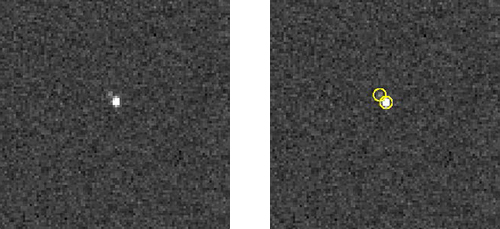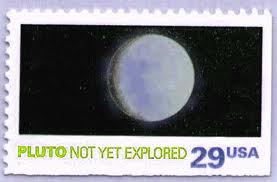On July 16, the en-route-to-Pluto team celebrated an important milestone: Their New Horizons spacecraft had arrived at a point in space just one year shy of Pluto flyby. Mission scientists met for two days of detailed encounter planning at the Johns Hopkins Applied Physics Laboratory in Laurel, Maryland, and threw a party at the Smithsonian National Air & Space Museum in nearby D. C. In exchange for agreeing to speak at the "One Year and Counting" event, I got to sit in on some of the science meetings and tour certain non-restricted areas of the Lab -- most notably the Mission Operations Center that controls New Horizons. The spacecraft had recently been awakened from hibernation to perform a slight course correction. Now, having smoothly executed the maneuver, it would go back to sleep for a few months while coasting toward its destiny.
The Mission Operations Center looks like Apollo Mission Control, only much smaller and less densely populated with anxious faces. Even though New Horizons is performing perfectly, and every phase of the mission has gone according to plan thus far, the spacecraft's handlers live with a constant concern for its welfare. They also admit, good-naturedly, to their own superstitious behavior. On Mondays, for example, when New Horizons signals home with a status update report, some staffers dress in green, the color that signifies optimal conditions. No one requires them to wear green, of course, but they are expressly forbidden to wear red, the color of danger. All shades of red, pink, and even fuchsia, are proscribed.
Toys also help control anxiety in mission control. New Horizons has a small Earthbound mascot affectionately known as the hibernation bear. When the spacecraft is hibernating, so does the bear, bedded down in the tiny nightshirt, cap, and blanket that have been lovingly hand-sewn for him. When New Horizons wakes up for a trajectory correction or instrument test, the bear is propped into a sitting position and dons his party hat.
In my remarks for the public program at the Air & Space Museum, I recalled my time on the Planet Definition Committee and considered the continuing controversy over Pluto's status among the bodies of the Solar System. Whether we call it a planet or a dwarf planet, Pluto remains an unexplored world.
We will start to come face to face with Pluto and its five known moons next January, when New Horizons rouses to begin its reconnaissance. By the time of closest approach in July, we'll see what kind of world Pluto is.



